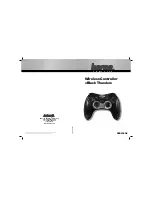
plated Tin.Refer to the chart below.
3. Pull all wires into the wiring box. The Remote Temperature Sensor and Battery Sense wires
can be inside the conduit with the power conductors. It is easier to pull RTS and Sense wires
before the power cables.
WARNING:Risk of Damage
Be sure that the battery connection is made with correct polarity. Turn on the battery
breaker/disconnect and measure the voltage on the open battery wires BEFORE connecting to the
controller. Disconnect the battery breaker/disconnect before wiring to the controller.
4. Connect positive te) of battery to the battery positive te) on the controller.
5. Connect negative terminal(-) of battery to one of the common negative terminals(-)on the
controller.
WARNING:Risk of Damage
Be sure that solar connection is made with correct polarity. Turn on the solar breaker/disconnect
and measure the voltage on the open battery wires BEFORE connecting to the controller.
Disconnect solar breaker/disconnect before wiring to the controller.
6. Connect positive wire(+) of solar module to the solar positive te) on the controller.
7. Connect negative wire(-) of solar module to one of the common negative terminals(-)on the
controller.
8. Screw four(4) power terminals tightly with 50 in-lbs torque.(5.65Nm)
3.5 Grounding and Ground Fault Interruption
Use a copper wire to connect the grounding terminal in the wiring box to earth ground. The
grounding terminal is identified by the ground symbol shown below that is stamped into the
wiring box just below the terminal:
The minimum size of the copper grounding wire is 8AWG(10mm
2
).
WARNING:Risk of Fire
Do NOT bond system electrical negative to earth ground at the controller.
3.6 Battery Temperature Sensor
The included Battery Temperature Sensor(BTS) is recommended for effective temperature
compensated charging. Connect the BTS to the 2-pole terminal(see figure as below). The BTS is









































